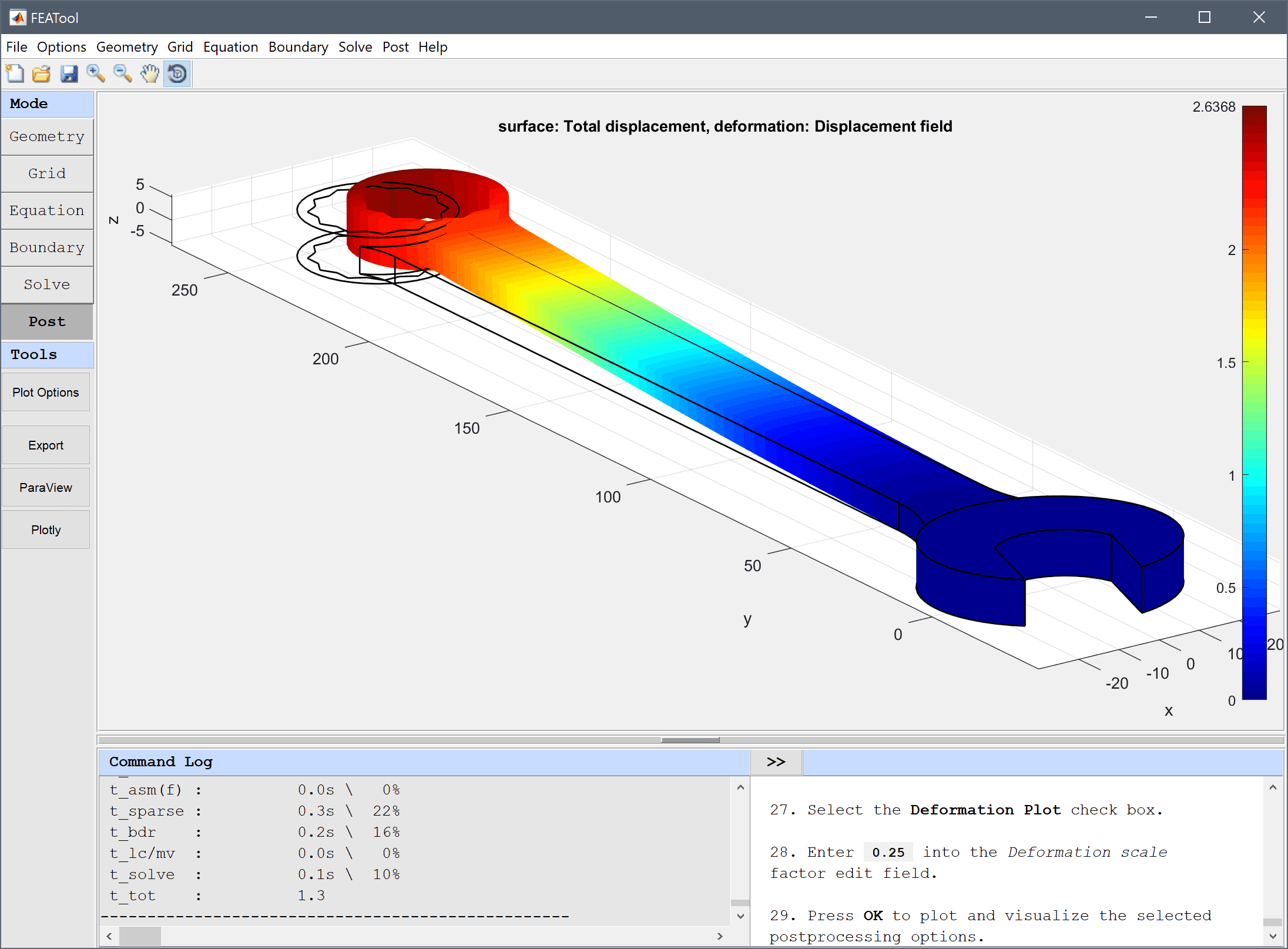
|
FEATool Multiphysics
v1.17.5
Finite Element Analysis Toolbox
|

|
FEATool Multiphysics
v1.17.5
Finite Element Analysis Toolbox
|
Tutorial example of calculating deformation and deflection in a spanner where the geometry is given in and imported from a STL CAD file.

This model is available as an automated tutorial by selecting Model Examples and Tutorials... > Structural Mechanics > Deformation of a Spanner from the File menu. Or alternatively, follow the step-by-step instructions below.
The spanner geometry will be imported from an STL file Instead of creating it with the built-in CAD tools.
The built-in grid generator does not handle faceted/STL geometries robustly, so it is recommended to use either the Robust or Gmsh grid generators for these types of geometries.
5 into the Subdomain Grid Size edit field.0.29 for the Poisson's ratio and 190e3 for the Modulus of elasticity. The other coefficients can be left to their default values. Press OK to finish the equation and subdomain settings specification.Note that FEATool works with any unit system, and it is up to the user to use consistent units for geometry dimensions, material, equation, and boundary coefficients. Here the geometry scale is in mm and thus the units of the equation coefficients have been adjusted accordingly.
Fix the displacement in all directions for the jaws of the spanner.
Enter the equivalent load expression F/A*(y>140) on one of the side boundaries. The switch expression ensures that the load is only active and applied on the top section where y is larger than 140 mm.
1000/(6*80)*(y>140) into the Displacement/load, x-component edit field.Plot the displacement and verify that the maximum displacement is around 2.5 mm.
The deformation of a spanner structural mechanics model has now been completed and can be saved as a binary (.fea) model file, or exported as a programmable MATLAB m-script text file (available as the example ex_spanner script file), or GUI script (.fes) file.